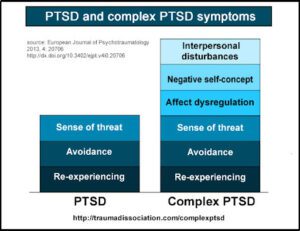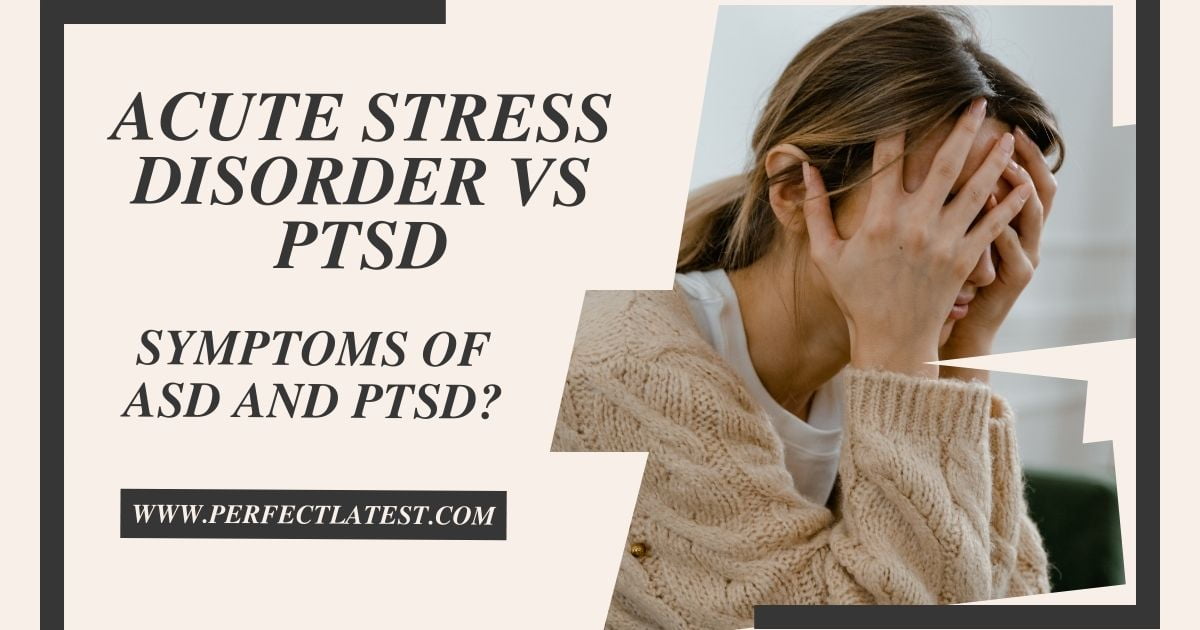Acute stress disorder vs ptsd:-
ASD and PTSD come from really tough experiences. Finding them early and getting help is super important. Even though they have similar symptoms, they’re different. Want to know more about Acute stress disorder vs ptsd? Please keep reading to understand how they’re not the same.
What Is ASD?:-
ASD, known as acute stress disorder, comes from a tough event. It usually shows up within a month after something terrible happens. It brings out strong mental and physical reactions that can cause big problems.
Any traumatic event, like a scary disaster or a life-threatening situation, can trigger ASD. Most people get better on their own, but sometimes, it’s good to get help from a professional in serious cases.

What Is PTSD?:-
Post-Traumatic Stress Disorder (PTSD) emerges as a mental health issue following a traumatic incident, resembling a prolonged version of acute stress disorder (ASD), which typically arises soon after the trauma. ASD transitioning into a month-long duration is often recognized as PTSD.
The duration of PTSD can greatly vary, contingent on the severity of the trauma. It might persist for a brief period or extend across several years. Nonetheless, receiving proper care and treatment can aid in overcoming its effects.
One approach to handling PTSD involves attempting to not excessively dwell on the distressing events. While this can be challenging, seeking professional support and guidance can significantly aid in managing and recovering from this condition.

What is the difference between ptsd and acute stress disorder?:-
Concept and Meaning: ASD, or acute stress disorder, is what happens right after a traumatic incident shakes you up. On the other hand, PTSD, post-traumatic stress disorder, is like a more intense version of ASD, a sort of heightened response to that initial stress.
Symptoms: People dealing with ASD might feel detached from their usual life, while those with PTSD face more intense symptoms, like having vivid flashbacks or nightmares about the traumatic event.
Treatment: For ASD, shorter-term therapy can help, but PTSD often requires a longer commitment to therapy along with more serious medications.
Mood: People experiencing ASD might feel a bit down, while those with PTSD often struggle with feelings of irritability or tension.
Occurrence and Diagnosis: ASD hits you right after the traumatic incident, but PTSD builds up over time and can last much longer. When it comes to diagnosing PTSD, there’s a checklist of at least six different symptoms that need to be present.
Duration: Typically, ASD doesn’t last for more than a month, whereas PTSD can stick around for much longer, ranging from months to even several years.
Recognizing these differences can be crucial in understanding and addressing the specific challenges someone might face after going through a tough time.

Symptoms of ASD and PTSD?:-
So, those are the main differences between ASD and PTSD. Now, let’s get into what they look like in terms of symptoms, starting with ASD.
ASD Symptoms: ASD brings on:
- Feeling numb
- Acting emotionally distant
- Strong anxiety episodes
- Trouble focusing
- Flashbacks
- Feeling disconnected
- Sleep issues
- Avoiding people or places linked to the trauma
- Being more on edge or aggressive
ASD symptoms are usually less intense and tend to fade faster than PTSD. Speaking of which, here are the symptoms of PTSD.
PTSD Symptoms: PTSD can show up with:
- Memories or flashbacks of the trauma
- Nightmares and unsettling dreams
- Emotional turmoil or guilt
- Avoiding social situations
- Not wanting to talk about the tough stuff
- Feeling hopeless
- Losing interest in things you used to enjoy
- Forgetfulness
- Getting easily scared or jumpy
- Having thoughts about hurting yourself or suicide
- Finding it hard to keep close relationships going
That’s how they stack up symptom-wise—ASD symptoms are usually lighter and pass quicker, while PTSD brings on more intense and longer-lasting challenges
Causes of ASD and PTSD?:-
Both ASD and PTSD arise from traumatic incidents that can involve various challenging situations:
- Losing someone close
- Accidents
- Natural disasters
- Injuries affecting the brain
- Life-threatening experiences
- Assault
- Sexual humiliation
- Domestic abuse

Risk Factors of ASD and PTSD?:-
The things that can make someone more likely to experience acute or post-traumatic stress disorders are pretty similar:
- Being there for a tough event
- Already dealing with mental health stuff
- Having gone through traumatic situations before
- Gender can play a role—females tend to be more at risk for both ASD and PTSD
- Younger kids and teens seem to be more prone to showing symptoms of these disorders
Diagnose ASD and PTSD?:-
Doctors use certain methods to diagnose ASD and PTSD. They involve:
- Learning about the traumatic event’s history
- Understanding how the person reacts to stress
- Checking how long the symptoms have been around
- Seeing how these symptoms affect daily life
- Reviewing past medical conditions
This process involves asking questions and observing the patient’s behavior to get to the bottom of what’s going on. Once diagnosed, doctors work on reducing the stress caused by the trauma, offering therapies and medications tailored to the severity of the condition.
ASD and PTSD Treatment:-
Treating ASD:
- Cognitive Behavioral Therapy (CBT): This approach helps understand behaviors and moods linked to the traumatic incident by connecting past experiences with current feelings.
- Mindfulness Therapy: Includes stress-management exercises, meditation, and breathing techniques to cope with ASD symptoms effectively.
Treating PTSD:
- Cognitive Processing Therapy (CPT): A form of CBT that focuses on changing distressing thoughts, and lessening the impact of traumatic events.
- Stress Inoculation Therapy: Aims to reduce extra stress associated with traumatic memories.
- Prolonged Exposure Therapy: Gradual exposure to the trauma in a safe environment helps manage triggers and anxiety related to the event.
Medication for ASD & PTSD:
- Antidepressants: Often used alongside therapy to alleviate symptoms and facilitate recovery.
Home Remedies for ASD & PTSD:
- Relaxation Techniques: Practices like meditation, yoga, and relaxation exercises aid in healing both mentally and physically.
- Avoiding Alcohol or Drugs: Steering clear of substances helps prevent exacerbating symptoms.
- Healthy Sleep Patterns: Maintaining good sleep habits reduces irritability and supports mental well-being.
- Balanced Diet: A healthy diet, especially foods rich in omega-3s, contributes to mental health and positive hormone balance.
How to Manage and Prevent ASD and PTSD:-
Acute and post-traumatic stress disorders can be tough, but spotting them early helps manage their impact. Follow these tips to ease the severity of ASD and PTSD symptoms:
- Seek help when disturbing thoughts first arise.
- Consult medical experts for serious issues.
- Address past psychological concerns proactively.
- Get professional guidance to improve behavior.
- Mentally prepare if entering a high-risk job.
Understanding the differences between ASD and PTSD gives a clearer picture. Treatment plans vary based on symptom severity and duration. Similar risk factors can be identified with clinical help. Given the potential for symptoms to worsen, seeking clinical assistance promptly is advisable.
Also, read about peripheral artery disease (PAD):- 4 stages of peripheral artery disease and risk Factors of PAD you must know
FAQ:-
Q1:- Is it possible for ASD to develop into PTSD?
Ans:- ASD has the potential to progress into PTSD within 6 months. Yet, timely and effective treatment at the outset can mitigate its harmful effects.
Q2:- What is TFCBT?
Ans:- It’s a type of therapy that focuses on trauma. Talking and discussions, help develop ways to manage tough memories
